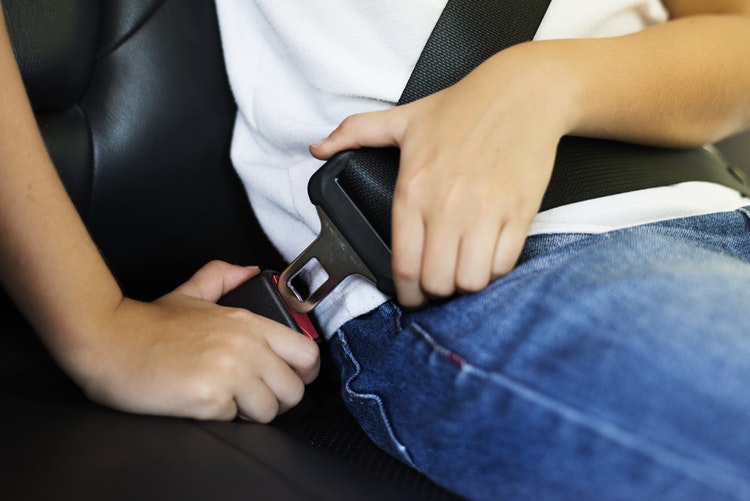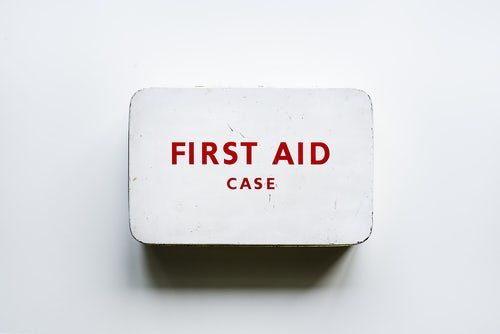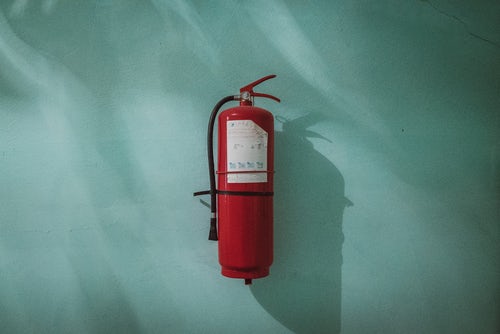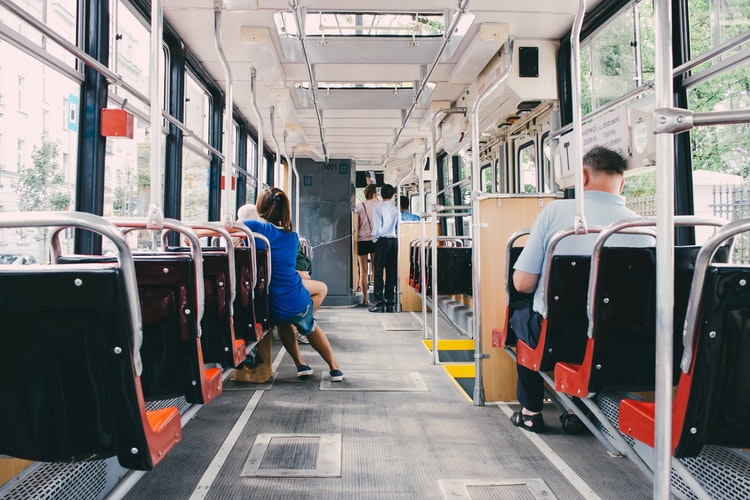Safety




Safety
In Ontario alone, more than 800,000 students safely travel almost 2 million kilometres to and from school every day on a school bus. Accidents, which are rare, are more likely to happen while students are boarding and leaving the bus, or crossing the street. Help us keep your children safe by teaching them about school bus safety.
Students: Follow Procedure to Stay Safe
When A Student Boards or Leaves A Bus..
.-
Be at the stop 5 minutes before your child's scheduled pick up time.
Wait in a safe place and keep away from the edge of the road - don't play in ditches or on snow banks!
Stay out of the DANGER ZONE (Directly Infront Of The Bus - Passenger Side Of Bus - Rear Of Bus) If you can touch the bus, you are too close!
Always cross the road INFRONT of the bus, never walk behind a school bus.
Look both ways, and wait until the bus driver signals to you before you cross in front of the bus - walk at least 10 giant steps away from the front of the bus.
Board and leave the bus in a single file - never push or shove!
Once the driver has signaled, walk across the road completely, don't run!
Never stop to pick up anything that you have dropped in the DANGER ZONES - ask an adult or the bus driver to help you.


While A Student Is On The Bus....
-
Find a seat right away. Stay seated, facing forwards at all times with your feet out of the aisle, and your belongings (such as a backpack) stored on your lap.
-
Don't put items in the aisle, this may cause other students to trip.
-
Never distract the bus driver, and always listen to your driver's instructions.
-
No food or drinks are permitted on the bus.
-
Don't yell, push or throw things.
-
Keep your arms and head inside the bus at all times.
-
Windows should never be down below the second notch (3 inches)
-
Never stand while the bus is in motion.
-
Unload bus from the front to the back (closest person to the front exits first).
Keep your arms and head inside the bus at all times. Windows should never be down below the second notch (3 inches) Never stand while the bus is in motion. Unload bus from the front to the back (closest person to the front exits first).
In Ontario alone, more than 800,000 students safely travel almost 2 million kilometres to and from school every day on a school bus. Accidents, which are rare, are more likely to happen while students are boarding and leaving the bus, or crossing the street. Help us keep your children safe by teaching them about school bus safety.

Students: Follow Procedure to Stay Safe
When A Student Boards or Leaves A Bus..
.-
Be at the stop 5 minutes before your child's scheduled pick up time.
Wait in a safe place and keep away from the edge of the road - don't play in ditches or on snow banks!
Stay out of the DANGER ZONE (Directly Infront Of The Bus - Passenger Side Of Bus - Rear Of Bus) If you can touch the bus, you are too close!
Always cross the road INFRONT of the bus, never walk behind a school bus.
Look both ways, and wait until the bus driver signals to you before you cross in front of the bus - walk at least 10 giant steps away from the front of the bus.
Board and leave the bus in a single file - never push or shove!
Once the driver has signaled, walk across the road completely, don't run!
Never stop to pick up anything that you have dropped in the DANGER ZONES - ask an adult or the bus driver to help you.

While A Student Is On The Bus....
-
Find a seat right away. Stay seated, facing forwards at all times with your feet out of the aisle, and your belongings (such as a backpack) stored on your lap.
-
Don't put items in the aisle, this may cause other students to trip.
-
Never distract the bus driver, and always listen to your driver's instructions.
-
No food or drinks are permitted on the bus.
-
Don't yell, push or throw things.
-
Keep your arms and head inside the bus at all times.
-
Windows should never be down below the second notch (3 inches)
-
Never stand while the bus is in motion.
-
Unload bus from the front to the back (closest person to the front exits first).
Keep your arms and head inside the bus at all times. Windows should never be down below the second notch (3 inches) Never stand while the bus is in motion. Unload bus from the front to the back (closest person to the front exits first).
When Sharing The Road With A School Bus...
-
Drivers travelling in both directions on an undivided roadway are required to stop by law when a bus is stopped with the red overhead warning lights activated and the stop arm fully extended.
-
When you approach a bus from the front, stop at a safe distance to allow students room to leave the bus and cross the road in front of the bus safely.
-
Don't move forward until the red overhead warning lights have stopped flashing and the bus begins to move.
-
Drivers who fail to stop for a stopped school bus with it's upper red warning lights flashing and stop arm extended will be fined!
-
EACH FOLLOWING OFFENCE: $1,000 to $4,000, six demerit points and possible jail time (up to six months)
-
Vehicle owners may be fined if their vehicle passes a stopped bus with it's red overhead lights flashing and stop arm extended, even if they were not the one driving.
-
Please ensure that new drivers are aware of these rules.
FIRST OFFENCE: $400 to $2,000 and six demerit points.


Frequently Asked Questions About School Bus Safety
1.Are School Buses Safe?
Yes. Ontario regulations require buses be driven by professionally trained, class 'B' licensed drivers with good driving records. All school buses must meet safety standards established by the Ministry of Transportation. For example, in Ontario all school buses must have a front safety crossing arm.
2.Why Are There No Seat Belts On School Buses?
Federal standards don't require seat belts on school buses, other than in the driver's position, due to the unique compartmentalization of the school bus seating. Studies have shown that adding seat belts to the current seating configuration of a school bus can increase the chance of head and neck injuries. This is because school buses are built differently from passenger cars. Buses protect passengers through specific design features like:
seats with high backs
seats filled with energy-absorbing material
seats placed close together to form compartments

When Sharing The Road With A School Bus...
-
Drivers travelling in both directions on an undivided roadway are required to stop by law when a bus is stopped with the red overhead warning lights activated and the stop arm fully extended.
-
When you approach a bus from the front, stop at a safe distance to allow students room to leave the bus and cross the road in front of the bus safely.
-
Don't move forward until the red overhead warning lights have stopped flashing and the bus begins to move.
-
Drivers who fail to stop for a stopped school bus with it's upper red warning lights flashing and stop arm extended will be fined!
-
EACH FOLLOWING OFFENCE: $1,000 to $4,000, six demerit points and possible jail time (up to six months)
-
Vehicle owners may be fined if their vehicle passes a stopped bus with it's red overhead lights flashing and stop arm extended, even if they were not the one driving.
-
Please ensure that new drivers are aware of these rules.
FIRST OFFENCE: $400 to $2,000 and six demerit points.

Frequently Asked Questions About School Bus Safety
1.Are School Buses Safe?
Yes. Ontario regulations require buses be driven by professionally trained, class 'B' licensed drivers with good driving records. All school buses must meet safety standards established by the Ministry of Transportation. For example, in Ontario all school buses must have a front safety crossing arm.
2.Why Are There No Seat Belts On School Buses?
Federal standards don't require seat belts on school buses, other than in the driver's position, due to the unique compartmentalization of the school bus seating. Studies have shown that adding seat belts to the current seating configuration of a school bus can increase the chance of head and neck injuries. This is because school buses are built differently from passenger cars. Buses protect passengers through specific design features like:
seats with high backs
seats filled with energy-absorbing material
seats placed close together to form compartments
